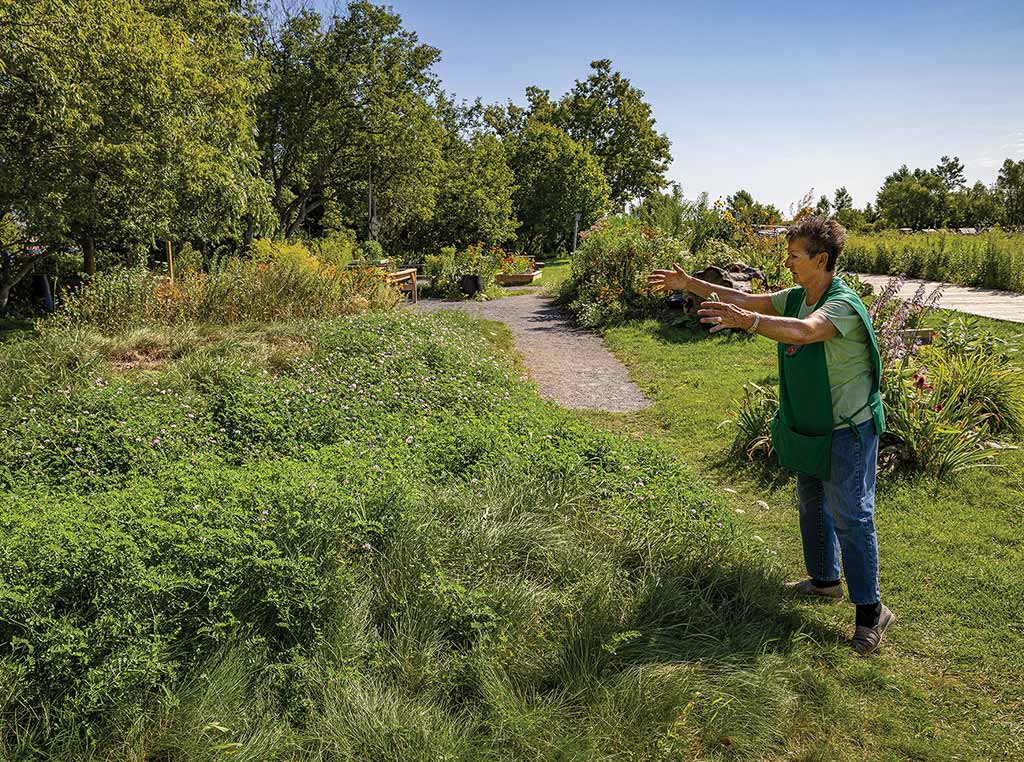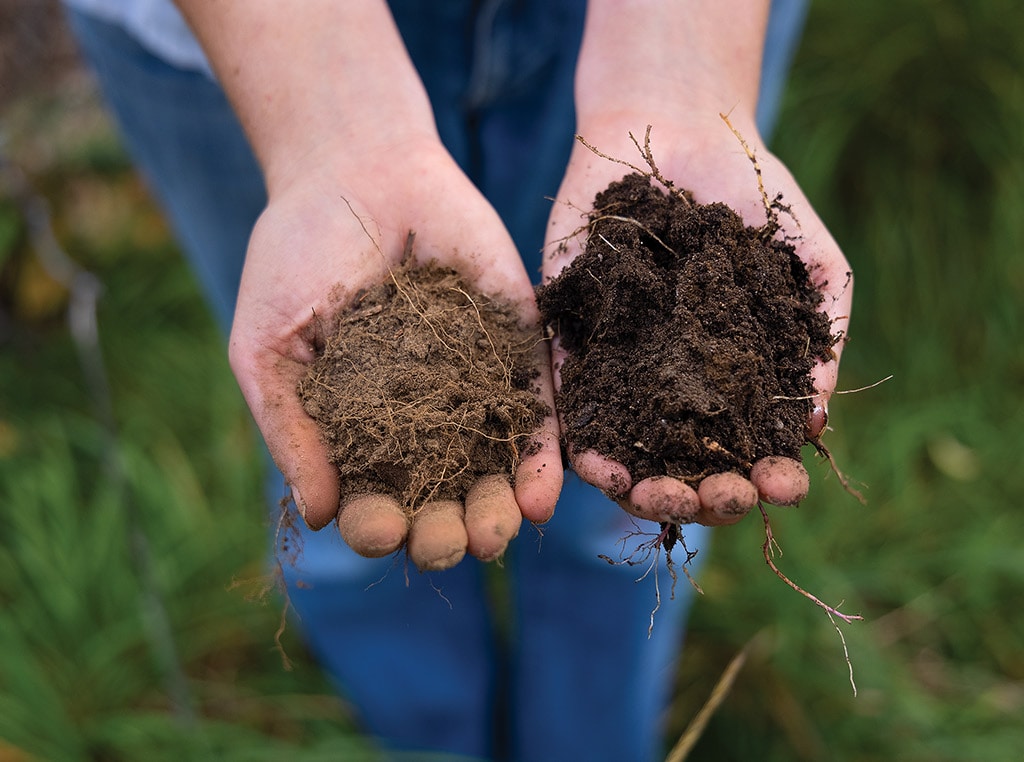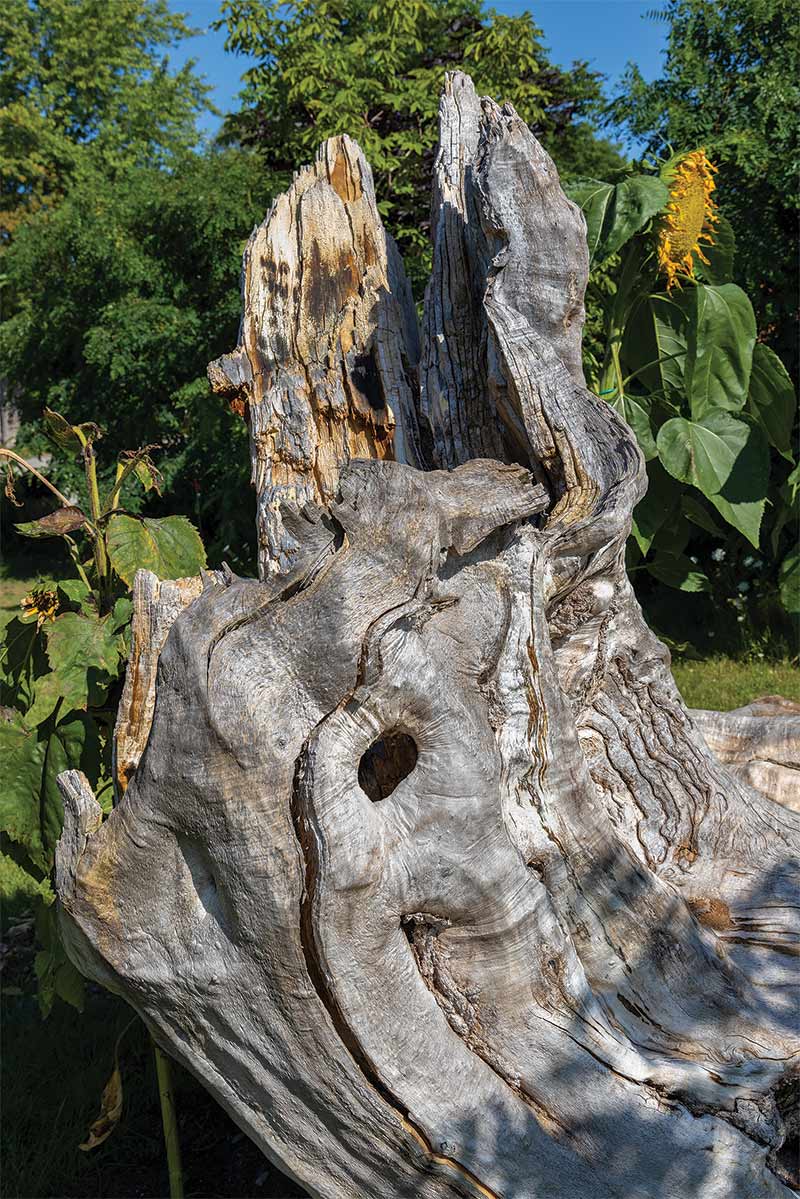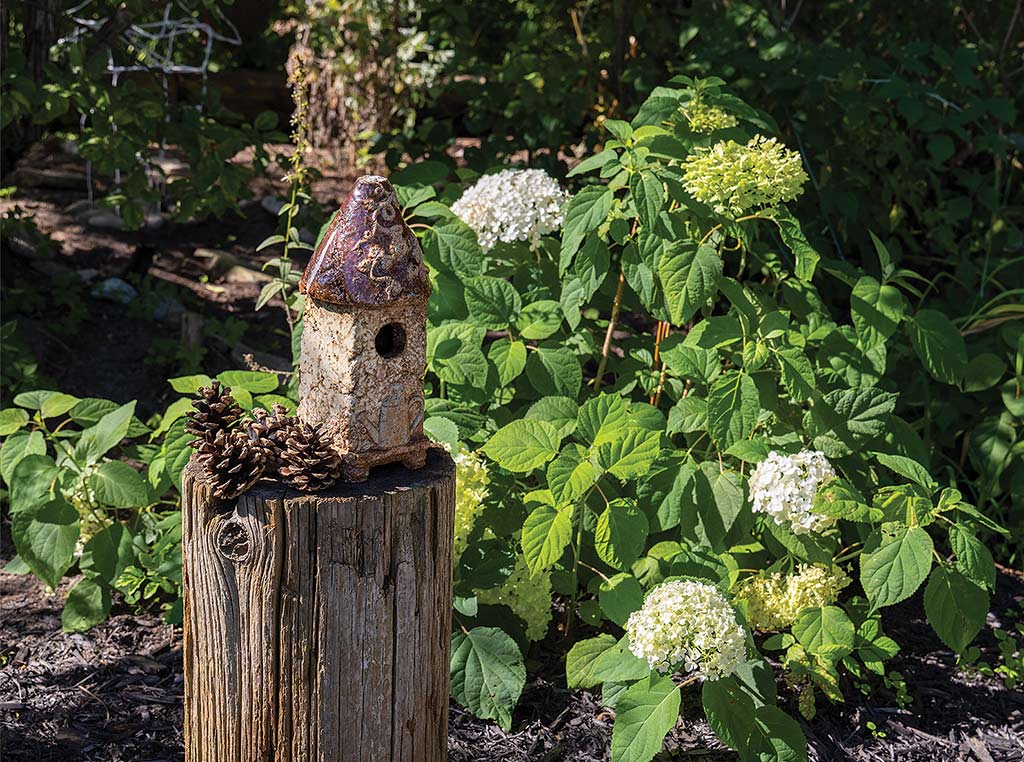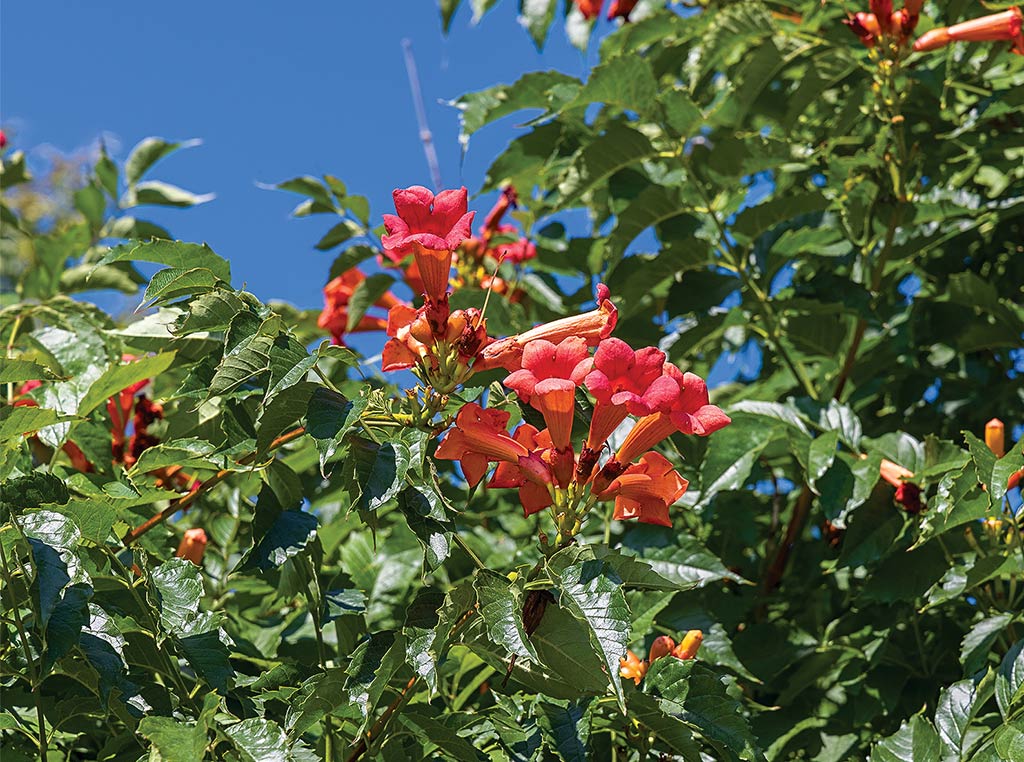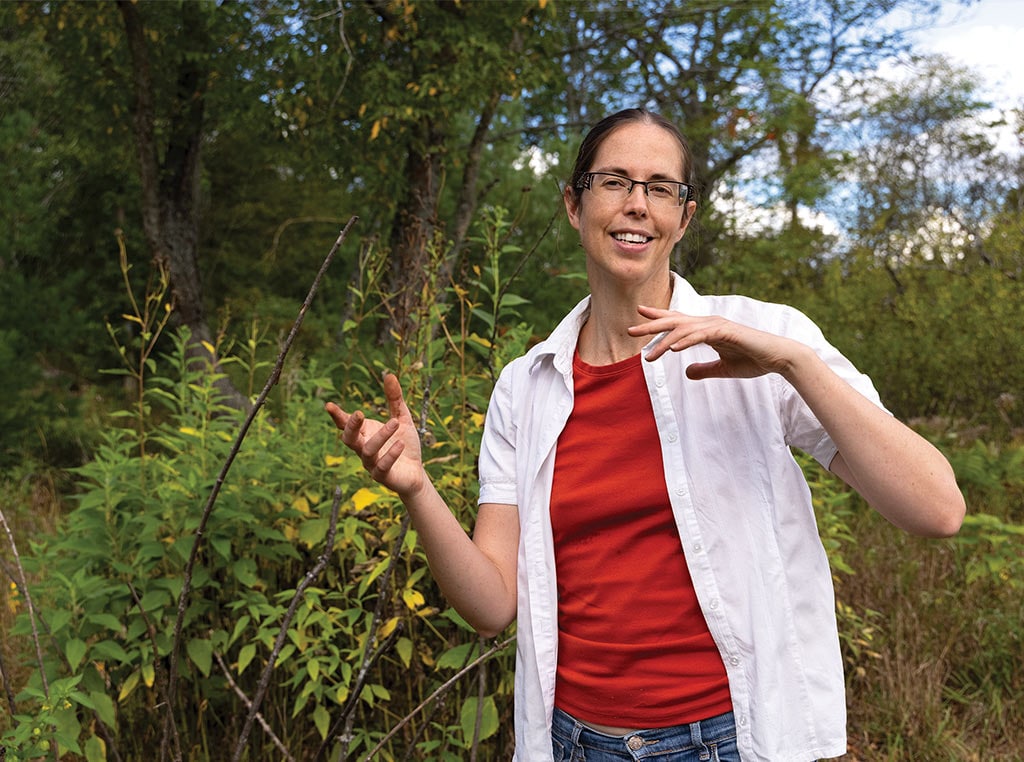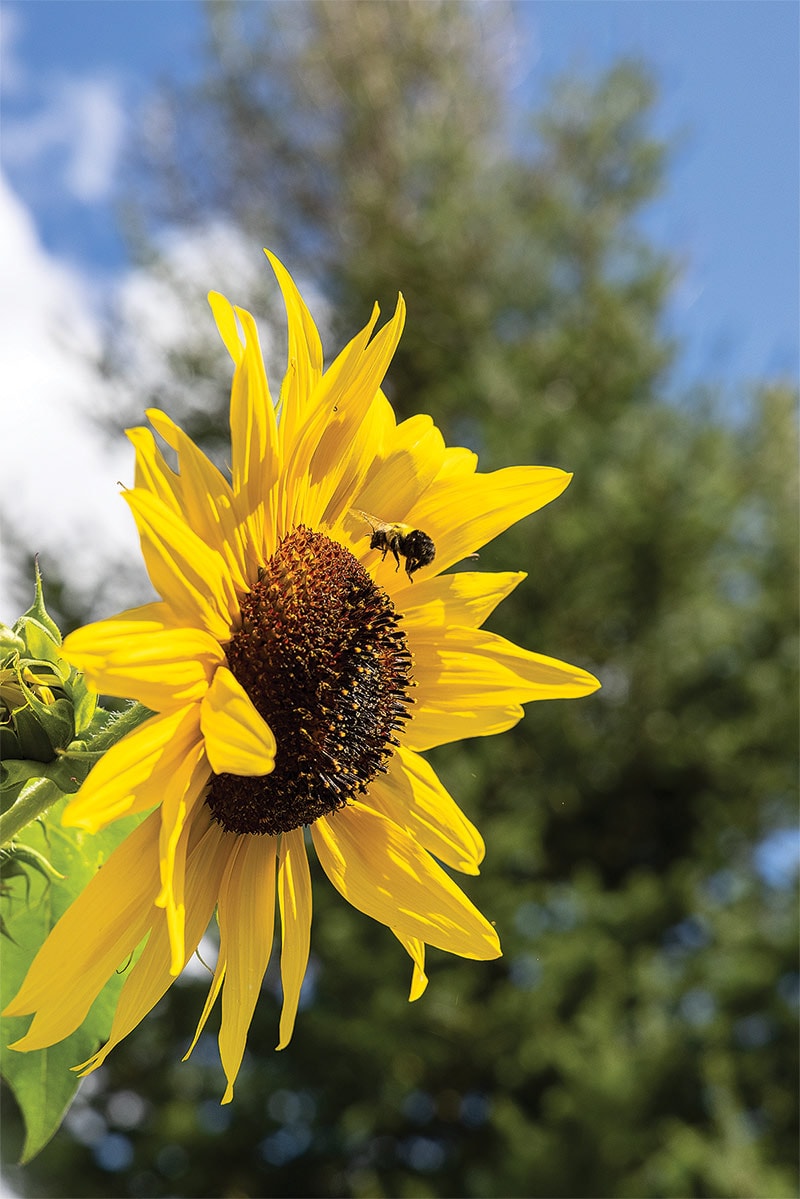Sustainability April 01, 2022
Ecological Gardens
Mimicking nature to create a space of beauty.
Ecological gardening, incorporating flowers, shrubs, trees, and as many native species as possible to attract pollinators, birds and other native wildlife, is among the hottest trends in landscaping today. The concept draws its inspiration from the natural world. The goal is to create a living ecosystem. It builds a community of flora (plants) and fauna (wildlife) to create a balanced biosphere of life both above and below the ground. When everything works together it will provide habitat for wildlife, feeding stations for pollinators, homes for native plants, help control pests, a place to trap rainwater and filter pollutants.
The Cobourg Ecology Garden in downtown Cobourg, Ontario, has been officially open to the public since 1996. The garden was the brainchild of Minnie Pennell, a local gardener, and an ardent environmentalist. Right from the start the volunteer-run space was designed as a teaching place where people could come and learn how to garden in a sustainable, ecologically supportive way. The garden itself is arranged as a series of islands so people can take home ideas, whether they have a big property or only room to keep a few pots on their balcony. It has continued to improve over time.
Each portion of the garden has its own theme, and each volunteer looks after their own bed. There is an herb garden, a water garden, a meadow garden, and Dora Body, the Chairperson of the Cobourg Ecology Gardeners, the group who maintains the garden, looks after the butterfly garden. They try to have plants that will appeal to every pollinator that passes through the garden.
“It provides an oasis for local wildlife in the heart of Cobourg, and it provides a place where migratory birds can rest before or after they make a long flight across Lake Ontario,” Body says. “I love the sense of wildness and the untamed atmosphere that has always been maintained in the garden. We try to let Nature rule as much as possible. It’s created just a wonderful space.”
Get started. For Sundaura Alford-Purvis, a horticultural professional and the Executive Director of the Society for Organic Land Care in Ottawa, Ontario, the first place to start to garden in an ecologically supportive way is by doing some detective work. Try to learn as much as possible about your site’s soil. Is it healthy and full of life or, like most urban soil, is it compacted and very low in the types of biological partners that plants rely on? If it is, most people’s default is to haul in soil, but soil health can be cultivated through proper care and a nice dense plant community.
There are lots of details to consider, Alford-Purvis says. Take the time to observe how water moves through the landscape. Note if there are any problems with water erosion or if nutrients and road salt from municipal snow management is an issue. Check out how the sunlight patterns vary throughout the year. Shadow patterns will be quite different in June than they are in September and December. Matching the plants to the place means they will thrive in the long run.
“Research what type of native plants, insects and wildlife would have once lived there,” Alford-Purvis says. “It does take time to learn all these things but spending time to do this at the start of the process will be well worth it in the end. It is like a new relationship, getting to know your partner is part of the fun.”
However, when choosing longer-living species like trees, Alford-Purvis says it’s important to remember the climate is changing. By 2050, Ottawa, Ontario is expected to have the summer temperatures found in Virginia today. So, she recommends choosing species whose natural range shows they can survive current winter lows and the projected summer highs of 2050.
A diversity of plant species that are native to the area creates the foundation for a resilient ecosystem. Most plant species now growing in urban areas were introduced from Europe or Asia, and a lot of native insects require native plants to complete their lifecycle. Since most hatchlings are raised on insects, if we want to have songbirds, we need native plants, Alford-Purvis says. If you are constantly battling weeds, it’s a sign that an important ecological role hasn’t been filled and nature decided to help you out. Once you notice the gap you can choose to fill it with another species if the one nature provided doesn’t suit your long-term intention for the space.
“Adapt your plans and respond to the garden as it matures,” Alford-Purvis says. “Keep checking back to the intentions that you set at the start to make sure that short-term solutions don’t derail your long-term goals.” ‡
Above. Sundaura Alford-Purvis says planting large numbers of species native to your local area creates a foundation for a resilient ecosystem. If you’re constantly battling weeds it's a sign that an ecological role hasn’t been filled.
Read More
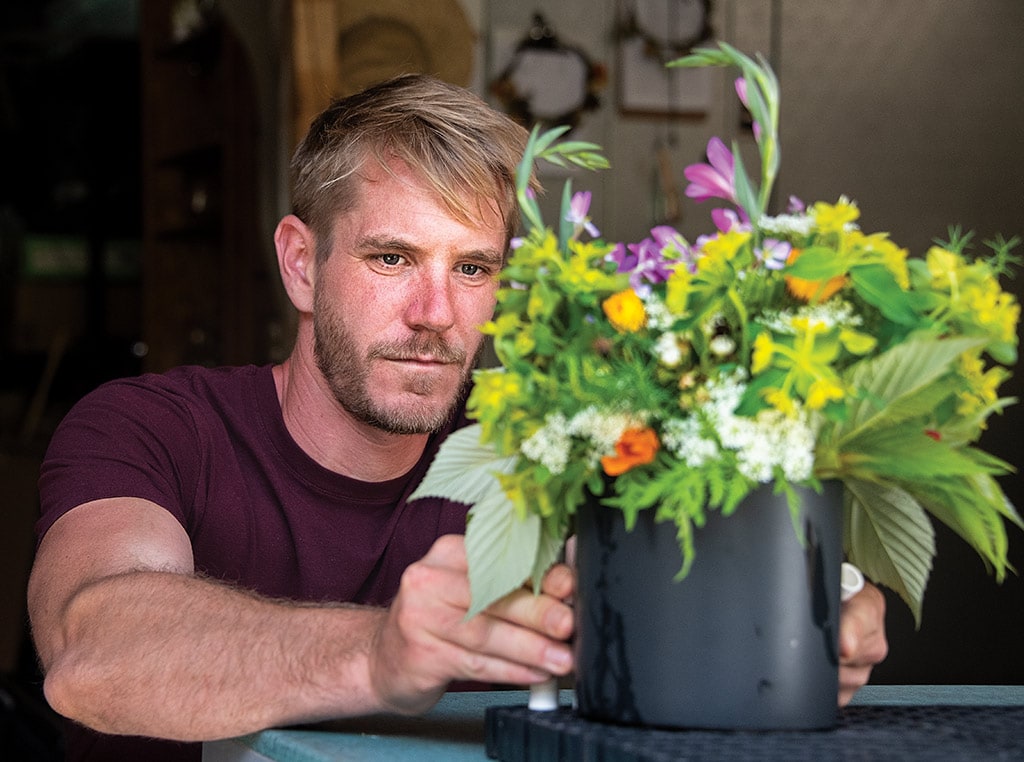
SPECIALTY/NICHE
Making Arrangements
Flower arranging takes small farm to the next level.
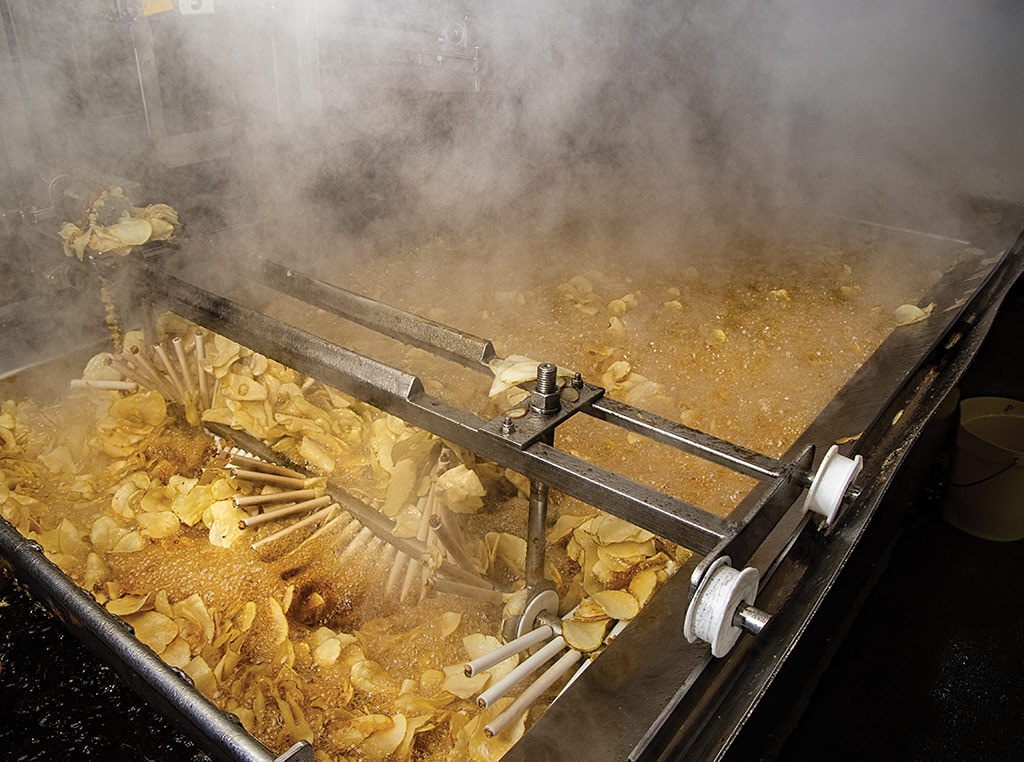
AGRICULTURE, SPECIALTY/NICHE
From Field to Bowl
Potato grower finds success through vertical integration.

